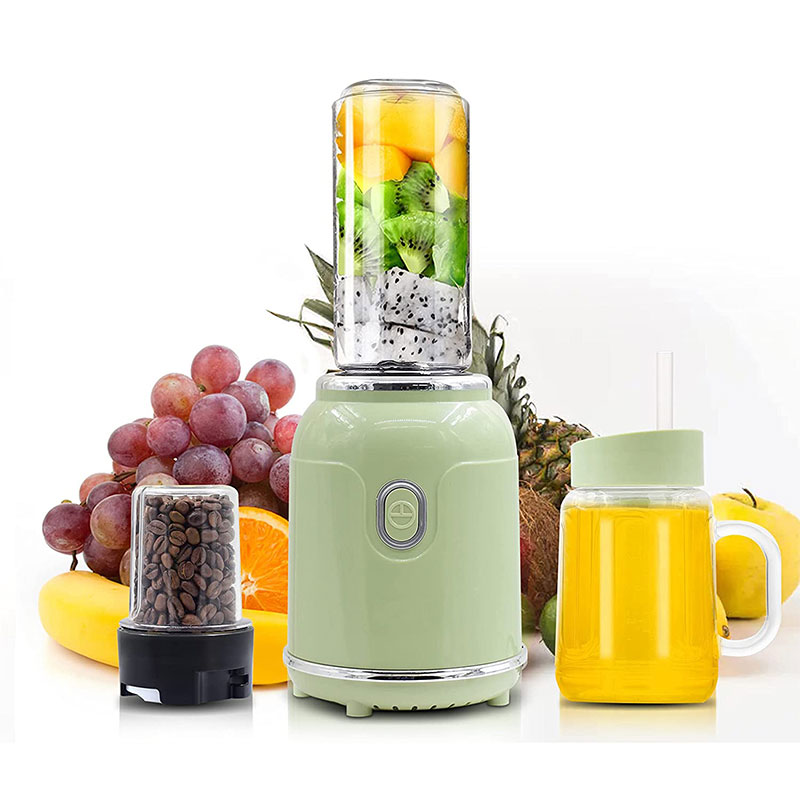Choosing the right table blender for professional use requires careful consideration of various features and specifications to ensure it meets the demands of a commercial kitchen. Here are key factors to consider:
1.Motor Power: In a professional kitchen, a robust motor is essential for handling demanding tasks. Look for blenders with motors ranging from 1000 to 2000 watts or higher. A powerful motor ensures consistent blending, especially when dealing with tough or frozen ingredients.
2.Blade Design: The blade assembly is critical for efficient blending. High-quality stainless steel blades with a well-thought-out design, including multiple blades and varying angles, can ensure thorough and even blending, reducing the need for scraping down the sides of the jar.
3.Jar Material: The choice of jar material is vital for safety and durability. Many professionals prefer BPA-free, shatterproof plastic or stainless steel jars over glass due to their resilience in a busy kitchen environment. Stainless steel jars are also corrosion-resistant and offer excellent longevity.
4.Jar Capacity: Assess your kitchen's needs and select a blender with an appropriate jar size. Table blender jars typically range from 1 to 3 liters in capacity. A larger capacity can accommodate larger batches, while smaller jars may be more suitable for individual servings or specialized recipes.
5.Variable Speed Control: Professional blenders should offer precise control over blending speed. Variable speed settings allow you to adjust the blending intensity, which is crucial when working with a wide range of ingredients and recipes. It enables you to achieve the desired texture and consistency.
6.Pulse Function: The pulse function is invaluable for quick bursts of blending power. It's useful for tasks like breaking down ice, incorporating chunky ingredients, or achieving a coarse texture. Pulse settings prevent over-blending and help maintain control over the final result.
7.Pre-programmed Settings: Some high-end blenders come equipped with pre-programmed settings tailored for specific tasks, such as making smoothies, soups, or sauces. These settings simplify the blending process, especially for less experienced staff, ensuring consistent results.
8.Noise Level: Noise can be a concern in a professional kitchen, both for staff comfort and customer experience. Look for blenders with noise-dampening features or quiet operation to maintain a pleasant working environment.
9.Safety Features: Safety is paramount in professional kitchens. Ensure the blender you choose has safety features like overheating protection and a secure lid with locking mechanisms to prevent accidents and protect your staff.
10.Ease of Cleaning: Time is precious in a professional kitchen, so opt for blenders with removable blades and dishwasher-safe parts for quick and efficient cleaning. Easy maintenance helps keep your operations running smoothly.
11.Durability and Build Quality: Professional blenders should withstand rigorous daily use. Select models with sturdy, commercial-grade construction and high-quality materials to ensure longevity and reliability in your kitchen.
12.Warranty and Support: Prioritize blenders that offer a substantial warranty period and access to responsive customer support. This ensures you can address any issues promptly and minimize downtime in your kitchen.
13.Size and Footprint: Consider the available space in your kitchen and the blender's dimensions. A compact design that fits comfortably on your countertop or in your storage area can optimize workflow and organization.
14.Accessories and Attachments: Evaluate the value-added features of each blender, such as included tamper sticks, recipe books, additional jars, or blending containers. These extras can enhance your blending capabilities and creativity.


Blender & Go is a brand of personal blenders that are designed for convenience and portability. Personal blenders are small, single-serving blenders that are typically used to make smoothies, protein shakes, and other drinks on the go.


 English
English 中文简体
中文简体 English
English 中文简体
中文简体












